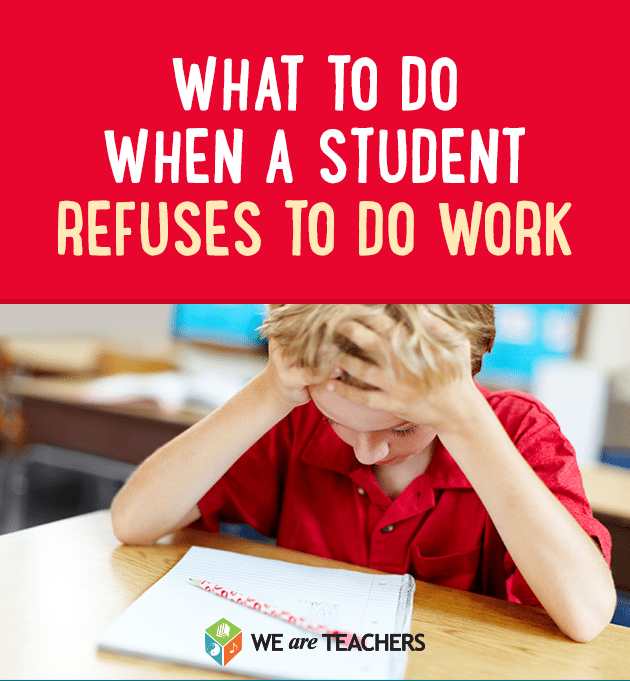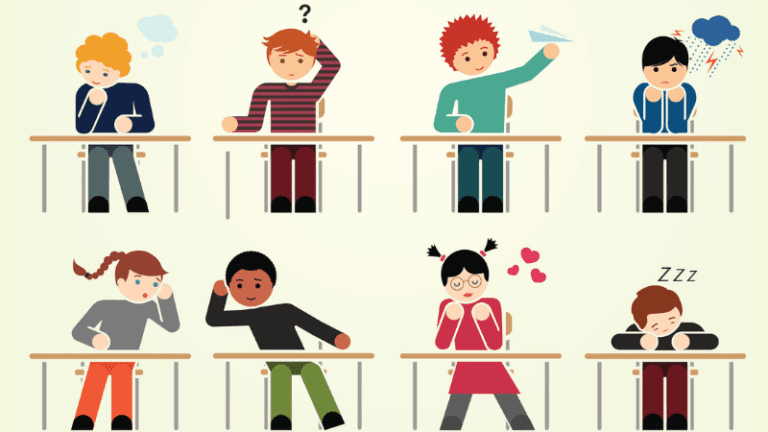It’s like the old saying goes: You can lead a horse to water, but you can’t make him drink. Teachers know all too well that even the best lesson plan will go awry if the students refuse to engage in your planned activities.
Teacher Sara conferred with other members of the We Are Teachers HELPLINE community on this subject. “How would you respond if a student just shuts down on you when asked to complete an independent assignment?” she writes. “He doesn’t disrupt the class, but simply sits and refuses to work. I teach fourth grade.”
Great question, Sara. Here’s some of the top advice from our helpliners!
1. Start by talking with the student.
Checking in, even just briefly, can help kickstart a reluctant student. “If I notice a student hasn’t started working after I give directions, I’ll go over and ask if he has any questions. Sometimes they do and sometimes it’s the reminder they need to get going.” —Erin F.
2. Grade accordingly.
Whether it’s a lower participation grade or simply an incomplete for the assignment, the student’s grade should reflect the level of effort. “I have a student like this, and I’ve just been grading her work as is. I had some pushback from the parents who were making excuses, claiming she didn’t understand the material, but her test scores prove otherwise!” —Jacqueline T.
3. Make up the time.
“I always tell my kids that if they don’t work during work time, then they have to work during play time, and they miss recess. Of course, even then sometimes the work doesn’t get done, but at least there were consequences to help them understand.” —Doreen G. “The time they just shut down could be considered their ‘recess’ since they’re taking a break from your instructional time. Maybe tell that to the student beforehand.” —Jackie S.
4. Find a quiet spot.
“Can you create a special spot for that student to work? Some of my students shut down because they become distracted, and they each have a spot somewhere else in the classroom they move to in order to focus and do their work.” —Chelsea E.
5. Don’t nag.
It’s ineffective and will zap all of your energy. “I quietly go to students like this and let them know their options: do work now, or lose a privilege. Then I walk away and let them make their choices. I don’t nag. They almost always make the right choice, and I applaud them for it and make sure they know they’ve done the right thing.” —Jennifer G.
6. Consider the level.
“It may be that he’s lacking the skills needed to complete the task. Give him a more basic assignment, and see how he does with that.” —Jo Marie S.
7. Break up the work.
It might be the totality of the assignment that’s weighing the student down. “Break up the task into two or three parts and give them to him one by one. That might help him feel less overwhelmed.” —Tiffany S. “Chunk the assignment and say something like, ‘I’ll be back in ten minutes to check numbers one through five.’” —Samantha B.
8. Set goals.
“Use a goal sheet and have the student set a goal of a specific number of problems they can get done in the amount of time given to the kids to work. Five minutes before the rest of the class’s time is up, check back in with the student and discuss the goal. Readjust until the student can start to set higher goals. The goal is not to make students do the most work; the goal is to have the students show improvements and make learning happen at each student’s level. I do this, and it works!” —Leslie G.
9. Understand your limitations.
At the end of the day, you can’t make a student do anything that he or she refuses to do. If you try every strategy and nothing’s working, “[d]ocument what’s happening, and move on.” —Frankie C.


